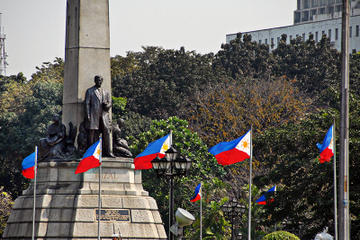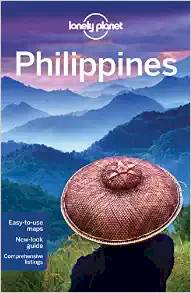« PHILIPPINES • Discover the Philippines • Manila
Discover Magical Manila
Tourism is a vital industry in Manila, and it welcomes over a million tourists each year. Major destinations include the walled city of Intramuros, the National Theater at the Cultural Center of the Philippines, Manila Ocean Park, Binondo, Ermita, Malate, Manila Zoo, National Museum of the Philippines and Rizal Park.

A | B | C | D | E | F | G | H | I | J | K | L | M | N | O | P | Q | R | S | T | U | V | W | X | Y | Z
» American Memorial Cemetery

A must for any American visitor to the Philippines, the Manila American Cemetery and Memorial is a not only a great and emotional symbol of American heroism, it is also a beautiful testament to a complicated history of American intervention in the region. Located in Metro Manila, the cemetery covers 152 acres, or 62 hectares, of total space and is the eternal home to more than 17,200 Americans killed fighting in the Pacific theater of World War II. Those buried may have either fought during the recapturing of Japanese held islands in New Guinea, or the Battle of the Philippines in 1941 and 1942 …
» Angono Petroglyphs

The oldest known artworks in the Philippines, the Angono Petroglyphs are neolithic carvings that date all the way back to 3000 BC. Based in the Rizal province two hours from Manila, the prehistoric cave paintings weren't actually discovered until 1965, when acclaimed artist Carlos Francisco noticed the ancient-looking engravings on a Boy Scouts field trip and let the National Museum of the Philippines know about his exciting find. Stretching along a 200-foot (60-meter) cave tunnel, the drawings are carved on ancient rocks made of compressed volcanic ash …
» Ayala Museum
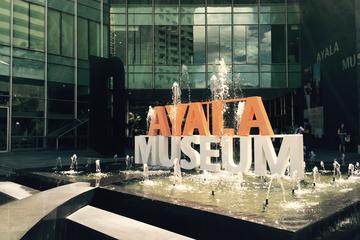
Widely considered to be one of the most important cultural institutions in the Philippines, the Ayala Museum was conceived by abstract painter Fernando Zobel. He originally envisioned a museum of history and iconography (and it still functions on both of those levels), yet it eventually developed into a fine arts museum of international renown. Conveniently located in Markati (part of Metro Manila, one of the most populous metropolitan areas in the world), its collections of art, gold jewelry, historical dioramas, maritime vessels, and many other displays are dazzling and sure to impress …
» Chinatown (Binondo)
_Binondo%20Church_shutterstock_754835.jpg)
Binondo, Manila's famous Chinatown district, is one of the great cultural troves of the Philippines. Well known for its bustling commerce and immense culinary scene, there are several things to see including the 17th century Buddhist temple known as the Temple of the God of War, or Kuang Kong. Here, you can learn the story of the famed general Quan Yin and even have your fortune told by a pious fortuneteller. Outside the temple are other grand religious structures like the catholic Basilica de San Lorenzo Ruiz and Santa Cruz Church …
» Chinese Cemetery

When Chinese citizens were denied traditional burial in Catholic Cemeteries during Spanish rule, locals went ahead and established their own final resting place, which today is known as the Chinese Cemetery. Dozens of famous (and infamous) residents were later executed by the Japanese at this iconic World War II historical monument. A Girl Scouts organizer, a Boy Scouts of the Philippines charter member, writers, authors, and even professional athletes, found this their final resting place …
» Corregidor Island
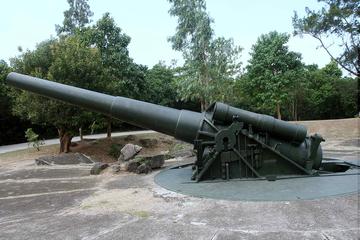
During World War II, the islands of the Philippines were heavily bombed by Japanese forces, and Corregidor Island, the U.S. island fortress at the mouth of Manila Bay, became a strategic target. Then, on May 5, 1942, Japan launched a full-blown assault on the island's U.S. and Philippine troops that fought side-by-side. Corregidor fell into the hands of the Japanese until 1945 when the United States recaptured the island fortress. Today Corregidor Island is one of the Philippines' most important historic sites …
» Fort Santiago
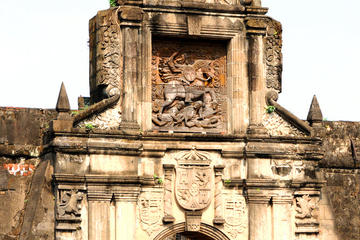
One of the most important historical sites in Manila, Fort Santiago was built by the Spanish conquistador Miguel López de Legazpi as a defensive fortress designed to protect the newly formed city of Manila. It is a key feature of the famous Walled City of Manila, which is referred to as Intramuros. José Rizal, considered a national hero in the Philippines, was imprisoned at Fort Santiago before his execution in 1896, as were countless others. It played a role in the city's penal and defense system all the way up to World War II …
» Intramuros
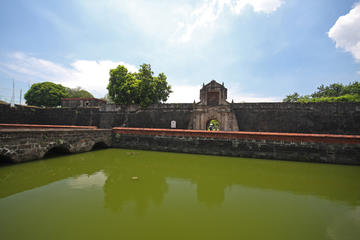
The historic heart of Manila, Intramuros (literally meaning "within the walls") is the oldest district in the capital city. The three-mile-long stone wall completely surrounds the district (with the exception of a small stretch near the River Pasig) and despite the fact that the district was nearly entirely obliterated by US bombers, it remains for visitors a rich cultural experience. Historical attractions within Intramuros include Fort Santiago, Postigo del Palacio, Baluarte de San Diego, Puerta de Isabel II, Plaza de Roma, San Agustin Church, and Ayuntamiento …
» Makati (Old Manila)
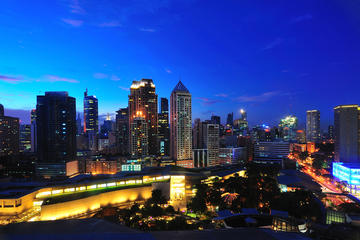
Regional travelers that make it over to Manila are sure to enjoy its affordable hotels and amenities. If you're in the mood for a real treat, however, you'll want to book a room in Makati City: the stand-alone definition of class in the Philippines. Known for its upscale shopping centers, Makati's central business district is a step above the rest in terms of quality, which also translates to an increase in prices. The Ayala Center is considered the best place to do it all, including several malls such as the Glorietta …
» Manila Ocean Park
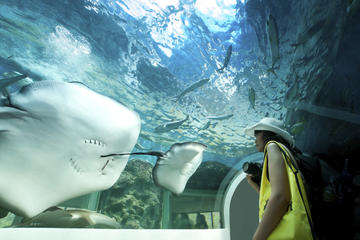
One of the best family destinations in the Philippines, Manila Ocean Park is as fruitful a journey through the aquatic that one can imagine. A tour through the oceanarium reveals an astounding variety of fish and marine life: over 5,000 kinds in all. The viewing tunnel is the biggest in the region, spanning 82 feet (25 meters), and contains stingrays, colorful seahorses, sharks and loads of attractive reefs. The experience of passing through the tunnel is like walking along the ocean floor …
» Mt Pinatubo Crater
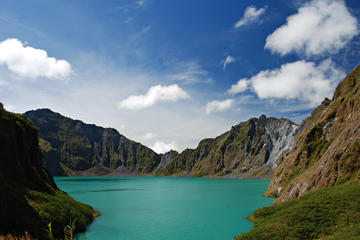
Sitting on Luzon island in the Philippines, Mt Pinatubo hadn't erupted for 600 years until 1991, when on June 15 it blew its top in the second-biggest volcanic explosion of the 20th century. The devastating eruption filled the surrounding valleys with lava and turned the evening sky red with ash, but once the dust had settled over the 4,872-foot (1,485-meter)-tall stratovolcano, it was revealed that the cap of the moutain had blown clean away to reveal a 1.2-mile (2 km)-wide crater filled with a shimmering, emerald green lake …
» Pagsanjan Falls
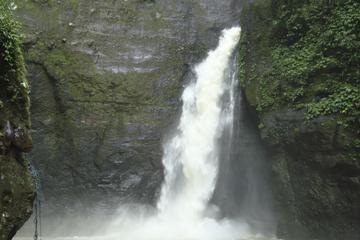
At the confluence of Bumbungan and the Balanac River across the Laguna de Bay from Manila is one of the Philippines' most popular attractions: Pagsanjan Falls. Also known as Magdapio Falls, this 100-foot-tall (30 meters) cascade is best reached on a "shooting the rapids" boat trip. In a long wooden canoe, two boatmen will paddle you about three miles (5 km) upstream through Pagsanjan Gorge (think monkeys, boulders, vines and tiny waterfalls) until you reach a natural pool just below the waterfall after about an hour …
» Rizal Park and Shrine

Covering several blocks near Manila Bay, the Rizal Park and Shrine is considered one of the best ways to relax in Manila. A shinning tribute to national hero and icon Dr. Jose Rizal, a patriot for reform during the Spanish Colonial Era, the park is a historical landmark as well as a beautiful stroll, with several well-manicured ponds, gardens and statues. Scattered throughout the park are the affects and literature of Dr. Rizal, including one poem carved into a stone, called "Mi Ultimo Adios" …
» Roxas Boulevard
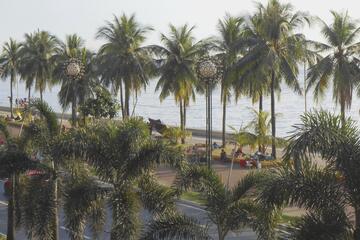
Famous for its sunset views of Manila Bay and the South China Sea, Roxas Boulevard is a real microcosm of Manila: on one side, it's all five-star hotels, yacht clubs and mega malls. On the other, the homeless sleep rough under coconut trees as eight lanes of honking taxis and cars rush by. One of the Philippine capital's major roads, Roxas Boulevard includes the popular Manila Baywalk, a 1.2-mile (2 km) stretch between the United States Embassy and the Cultural Center of the Philippines (CCP) …
» San Agustin Church and Museum

Located in the historic Intramuros district of Manila (the oldest district and historic core of Manila, otherwise known as the "Walled City"), the Church of San Agustin was designated an UNESCO World Heritage Site as an example of the Baroque architecture that was specific to the Philippines. A Roman Catholic Church, it was constructed by the Spanish in the sixteenth century, but was not consecrated until 1607. Its beautiful architecture is worth the visit all by itself, though it also houses the tombs of several historical figures …
» Subic Bay
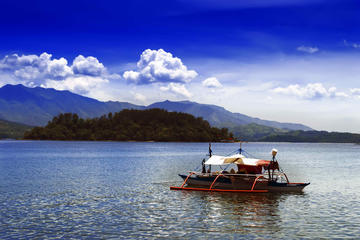
Surrounded by palm trees and the South China Sea on the west coast of Luzon, Subic Bay has become many things since its naval base closed in 1992: a tropical beach destination and duty-free port, a wreck diver's dream and a gated playground for the rich, replete with golf courses, yachts, smart hotels and even a casino. Two hours' drive west of Manila, Subic Bay's main districts are the tax and duty free Freeport Zone and the CBD, where most of Subic Bay's shops and hotels sit …
» Taal Volcano
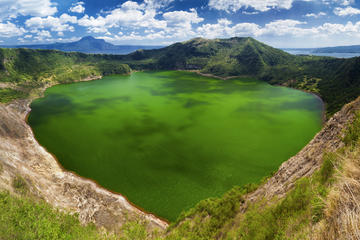
In the middle of the Philippines' third-largest lake lies Taal Volcano, one of the most active volcanoes in the country. Sitting on the Pacific Ring of Fire, Taal has had 33 eruptions in its history; even the lake it sits on was created by volcanic eruptions more than 500,000 years ago. To get to the volcano, head to the little town of Talisay 2.5 miles (4 km) southeast of Tagaytay, where you can catch a boat. The 30-minute ride across sulfuric Taal Lake will bring you to the shores of Volcano Island from where you can hike or ride a horse to the top of Taal Volcano …
» Tagaytay

The Philippine city of Tagaytay is a popular tourist destination, especially among Manila's weekend crowd. Surrounded by hills and mountains, forests and cool highland grasslands, the pleasant weather is a big draw. The main attraction, though, is Tagaytay's famous views; Taal Lake and Taal Volcano shimmer to the south while Manila Bay stretches out to the north and Laguna de Bay dominates the view to the east. One of the most scenic spots in the city is the People's Park in the Sky on Mount Sungay …
» Villa Escudero Plantations
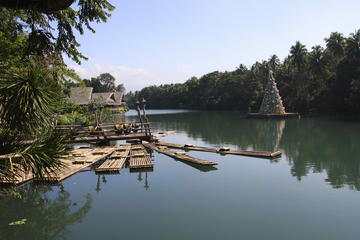
Surrounded by mountains and tropical trees, the working coconut plantation and resort of Villa Escudero is a popular day trip from Manila. Since beginning life as a sugarcane plantation back in the 1880s, Villa Escudero is now a resort dedicated to Philippine culture and has been in the hands of the Escudero family for over a century. Home to the Philippines' first hydroelectric plant, Villa Escudero offers lunch at its waterfall restaurant, during which visitors can feel the cool spring water flow over their toes …
« PHILIPPINES • Discover the Philippines • Manila




